One of the 21st century’s most revolutionary technological advances has been the expansion of mobile networks. Every iteration since 1G, which enabled analog voice transmission, to the quick development of 2G, 3G, and 4G LTE, has significantly increased speed, capacity, and functionality. Although 5G’s arrival ushered in a new era of connection, technology is still advancing. While we are investigating 5G’s possibilities, research and development are already setting the stage for 6G, the next big advancement. This article explores the current status of 5G technology and the bold vision for 6G, emphasizing the advantages and potential of both.
The Rise of 5G Technology
The fifth generation of wireless technology, or 5G, is a significant improvement above 4G LTE. Its goals were to accommodate a large number of linked devices at once, lower latency, and increase mobile broadband speeds. Offering peak data rates of up to 10 gigabits per second (Gbps), reducing latency to as low as 1 millisecond, and boosting network capacity to manage huge data traffic are the main objectives of 5G.
Better Capacity and Speed: Compared to 4G, 5G networks can deliver data speeds that are 10 to 100 times quicker. This increased speed enables faster downloads, more fluid high-definition video streaming, and enhanced user experiences during periods of heavy demand.
Low Latency: One of 5G’s most important innovations is its lower latency. 5G offers near-instantaneous connectivity between devices with a latency of about 1 millisecond, which is essential for applications like augmented reality (AR) and autonomous driving that demand real-time responsiveness.
Enhanced Connectivity: 5G can handle the growing number of IoT (Internet of Things) devices, from industrial sensors to smart home devices, because it can accommodate up to one million devices per square kilometer.
Network Slicing: With the help of this function, 5G network operators can build several virtual networks inside of a single physical network. 5G is very versatile since each slice may be tailored to fulfill specific needs, including ultra-reliable low-latency communication or high-speed internet.
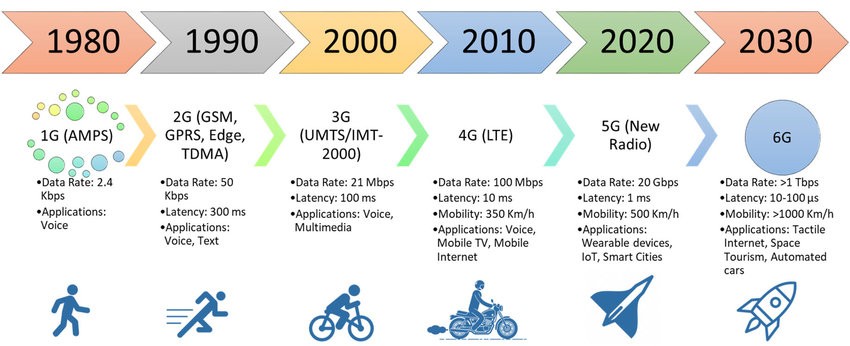
Applications and Impact
Numerous industries could undergo a revolution because to 5G technology. It makes high-definition video feeds possible for telemedicine and remote surgery in the healthcare industry. It facilitates automation and in-the-moment equipment monitoring in manufacturing. Improved connection is advantageous for public safety and traffic management in smart cities. All things considered, 5G is opening the door for technologies that depend on pervasive, dependable, and quick connectivity.
The Vision for 6G Technology
1. What is 6G?
Sixth-generation wireless technology, or 6G, is thought to be the next big development after 5G. Although 5G is currently being deployed globally, 6G research is already in progress, with a 2030 launch anticipated. Even greater data speeds, extremely low latency, and the integration of cutting-edge technology like artificial intelligence (AI) and sophisticated network architecture are the objectives for 6G.
2. Expected Features and Capabilities
Ultra-High Data Rates: 6G promises to outpace 5G speeds by achieving data rates of more than 100 Gbps. Even more demanding applications, such holographic communications and immersive virtual environments, will be supported by this advancement.
Near-Zero Latency: As little as 0.1 milliseconds is the goal for researchers to achieve. Applications requiring immediate input and interaction will be made possible by this improvement, especially those in real-time augmented reality and remote robots.
AI and Machine Learning Integration: 6G networks are anticipated to have AI and Machine Learning at its heart. With the use of advanced threat detection and response, these technologies will enable self-optimizing networks, predictive maintenance, and enhanced security.
Advanced Spectrum Utilization: Terahertz (THz) waves are one of the new frequency bands that 6G will investigate. These waves have the potential to provide previously unheard-of bandwidth and data rates. On the other hand, additional difficulties with hardware development and propagation arise at high frequencies.
Improved Coverage and connection: The 6G vision calls for ubiquitous connection, which makes it possible to access network resources without difficulty even in isolated or underdeveloped places. A combination of terrestrial and non-terrestrial networks, including satellites and high-altitude platforms, will be used to accomplish this.
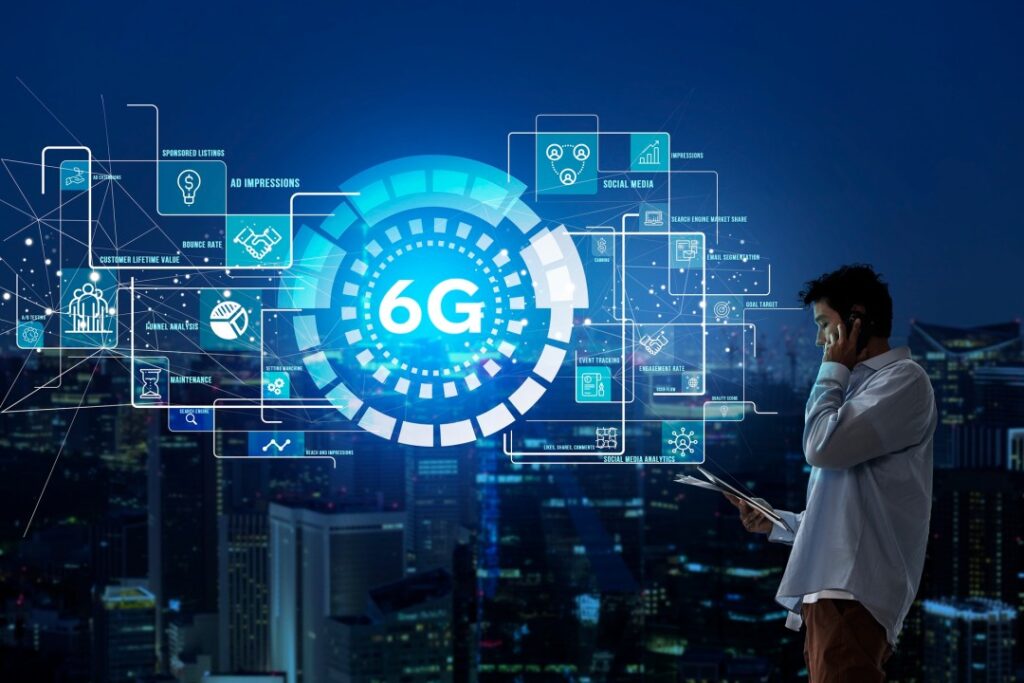
3. Potential Applications and Impact
6G may have a significant impact and change many facets of society. It may make it possible for completely immersive virtual and augmented reality experiences in communication, obfuscating the distinction between the actual and digital worlds. 6G could help with the development of cutting-edge driverless vehicles with improved safety features in the transportation sector. It would make it easier to process and make decisions in real time in smart cities, enhancing resource management and urban living conditions.
1. Technological and Infrastructure Challenges
There are substantial technological obstacles for both 5G and 6G. The installation of new antennas and tiny cells is necessary for 5G, and it will cost a lot of money to coordinate. Similar advances in hardware, spectrum management, and network architecture are required for the development of 6G.
2. Security and Privacy Concerns
Security and privacy problems are growing along with connectivity. The necessity for strong security measures to fend off potential threats has already been brought to light by 5G networks. Because of the network’s increased complexity with 6G, even more sophisticated security measures will be needed to protect user privacy and protect data.


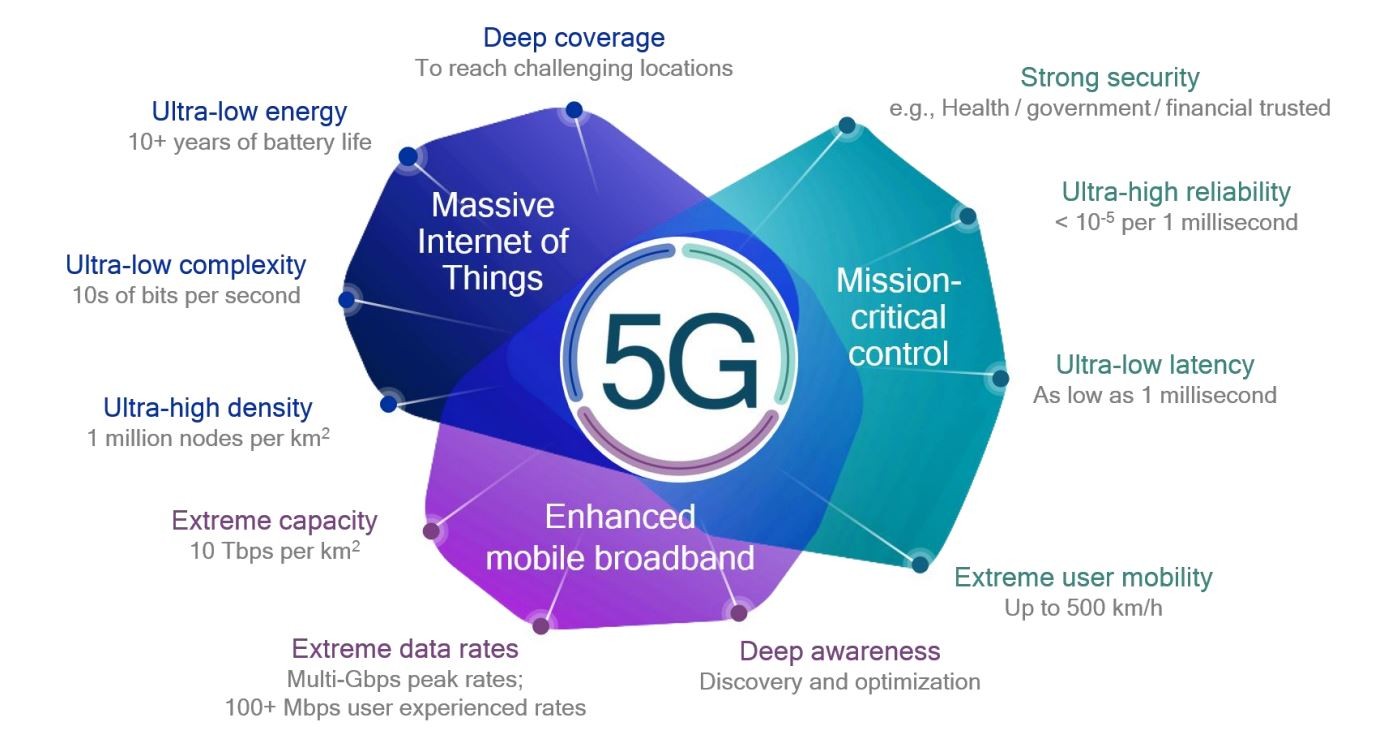





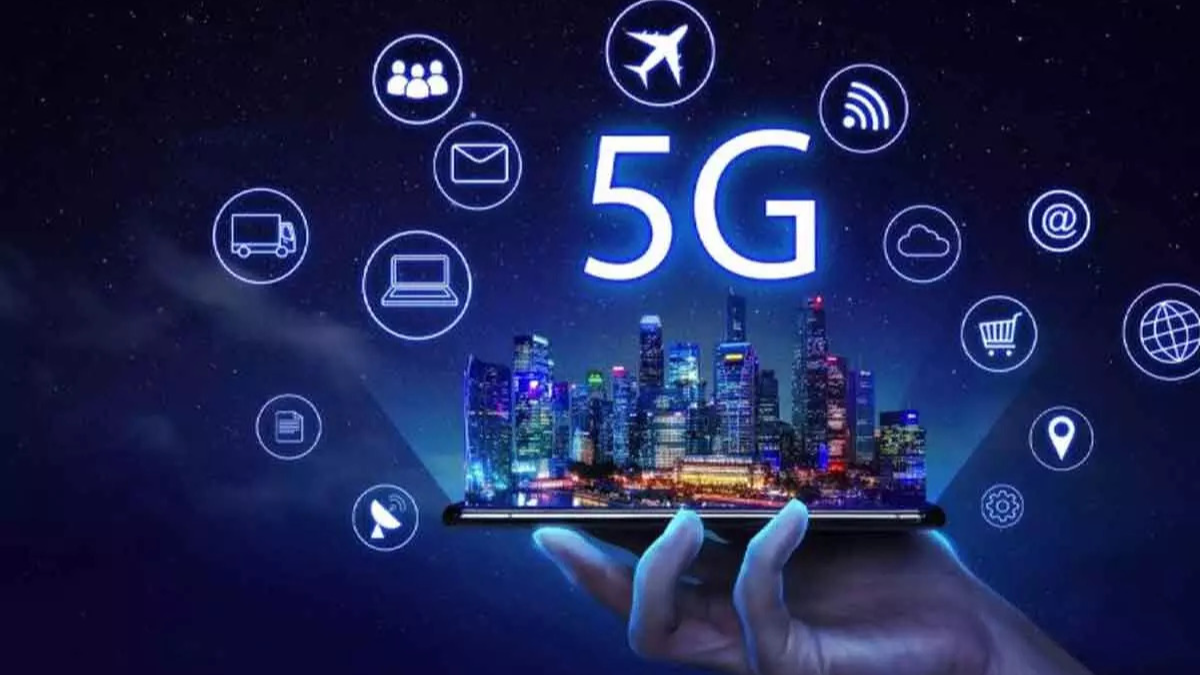
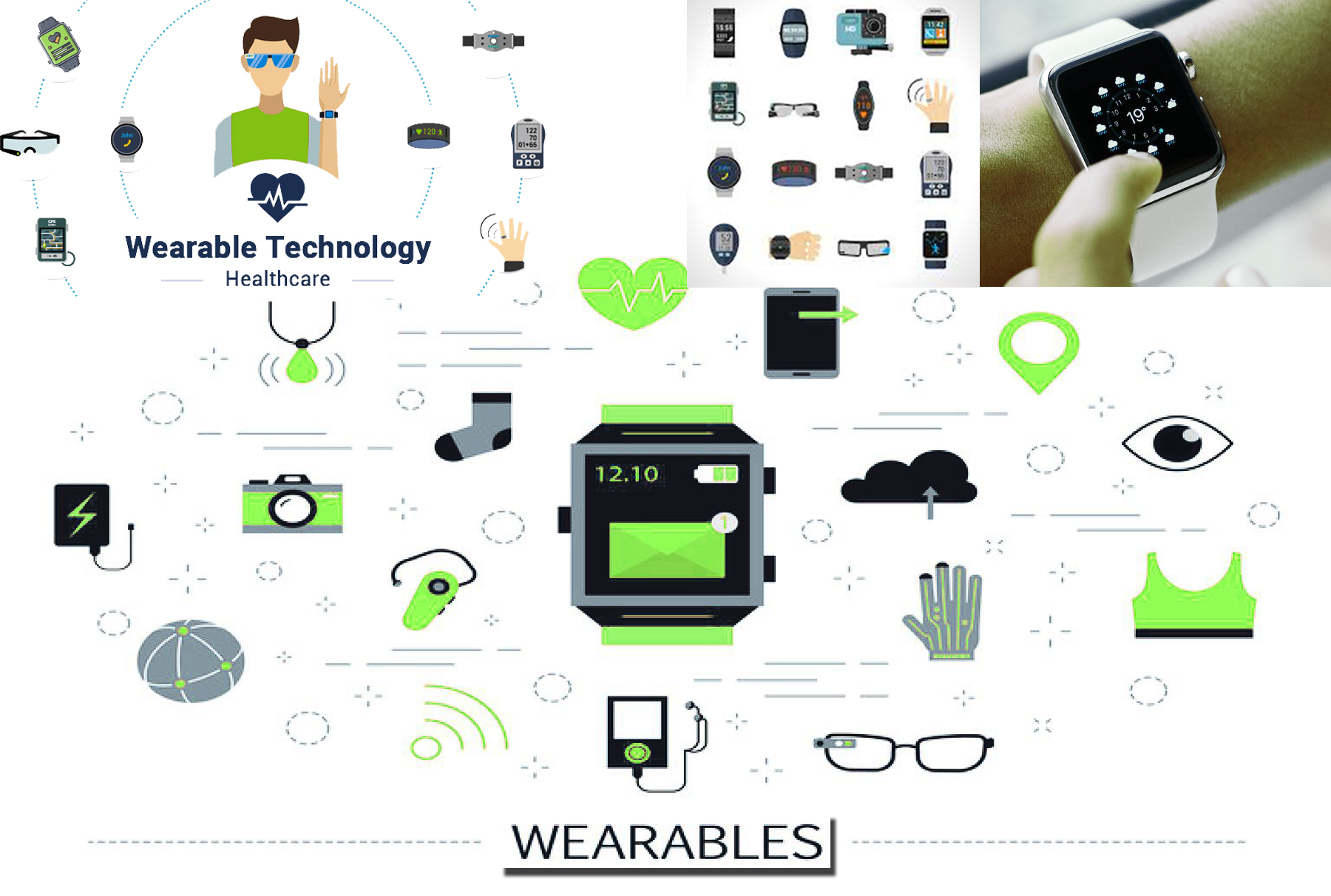
Leave a Reply